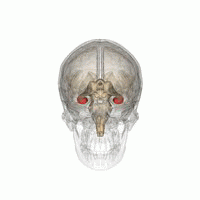
Photo from wikipedia
Given the importance of depression and the adverse effects of conventional treatment, it is necessary to seek complementary therapies. In a rat model of depression, this study aimed to assess… Click to show full abstract
Given the importance of depression and the adverse effects of conventional treatment, it is necessary to seek complementary therapies. In a rat model of depression, this study aimed to assess the behavioral and morphological effects of embedding absorbable thread in acupoints (acu-catgut), and compare the results to those of fluoxetine treatment and the corresponding control groups. Therefore, depressive-like behavior was evaluated with the forced swimming test, and dendritic morphology (in the CA1 hippocampal region) with the Golgi-Cox technique and Sholl analysis. After weaning, male Sprague-Dawley rats were housed in social isolation for 8 weeks to induce depressive-like behavior. They were then given a 21-day treatment by stimulating acupoints with acu-catgut (AC) or fluoxetine (FX) (2 mg/kg). Rats were divided into six groups: Control (socially housed), social isolation (SI), SI + AC, SI + Sham (sham embedding of thread), SI + FX and SI + VH (vehicle). Compared to fluoxetine, acu-catgut treatment was more effective in reversing depressive-like behavior elicited by SI. The SI-induced reduction in dendritic length and spine density in hippocampal CA1 pyramidal neurons was attenuated after prolonged treatment with acu-catgut or fluoxetine. Hence, both treatments proved capable of reversing depressive-like alterations caused by SI, likely due to dendritic remodeling in the hippocampus.
Journal Title: Neuroscience Letters
Year Published: 2018
Link to full text (if available)
Share on Social Media: Sign Up to like & get
recommendations!